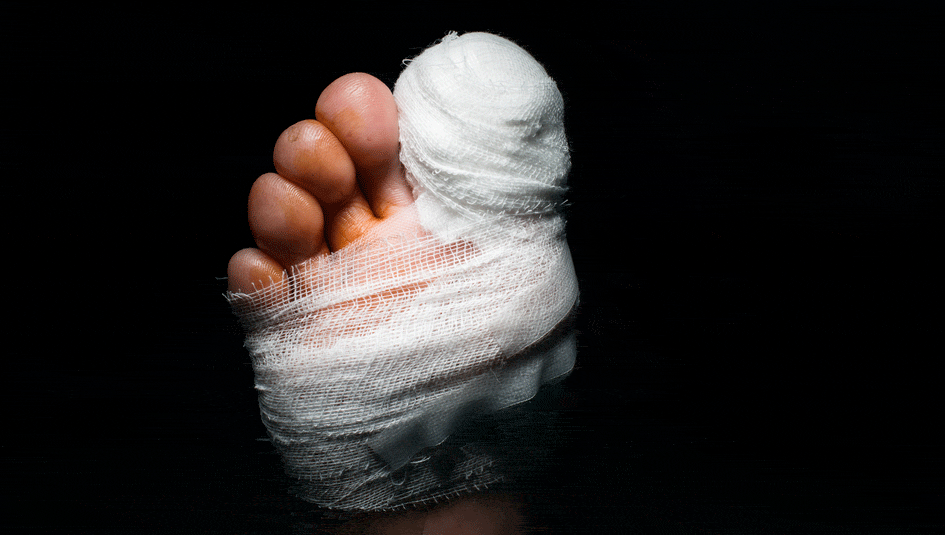Why Foot Care is Important for People with Diabetes

Certified diabetes educator Becky Wells recently retired from working with a diabetes self-management education program at Hendrick Medical Center in Abilene, Texas. She has shared her “Ask the Diabetes Educator” advice columns from that program with Insulin Nation.
Question: Why is foot care mentioned so much in diabetes management? I don’t have any problems with my feet, and it seems like a waste of time to keep looking at them.
Answer:
Some 25 percent of all diabetes-related hospital visits are because of foot issues. It can be hard to avoid all medical issues related to diabetes, but this is one area of your self-care where effort and vigilance is likely to pay off with better health outcomes.
People with diabetes are at risk for lower-extremity amputations. It’s estimated that about 15 percent of people with diabetes will develop a diabetic foot ulcer in their lifetime, and 85 percent of non-accident lower-extremity amputations are preceded by a foot ulcer.
Foot issues arise because of damage to fine blood vessels in the feet caused by high blood sugar levels. Diabetes may cause the nerves of your feet to deaden to trauma or stress; this stress can come from a sharp object on the ground to new shoes rubbing against your heels. Diabetes can also lead to decreased blood flow to the feet and deformities such as hammertoes, claw toes, foot ulcers, and calluses.
Your healthcare provider will check feeling in your feet with a monofilament, which looks like a fishing line. This test is done at least yearly. A tuning fork might also be used to check your sensitivity to vibration. And your pulse readings at your feet will be taken at these visits to monitor blood flow. Such screenings are vital for your health, but your foot care shouldn’t stop there.
It’s important to make a habit of looking at your feet daily. Make a habit of it and incorporate it into other daily activities. Look at the top, sides, bottom, and between the toes for changes in color or breaks in the skin. Any break in the skin should be cleaned with soap and water and treated with antibacterial ointment. If you see redness, heat, or pus, make a doctor’s appointment within a day or two to screen for possible infection. Starting antibiotics sooner rather than later may save you a hospital admission or prolonged healing time.
Since healing from wounds can be difficult for people with diabetes, maintenance is your friend. Treat your feet by wearing shoes in and out of the house. If you cannot cut your nails, or if you have calluses, corns, ingrown nails, or toenail fungus, consider making an appointment with a podiatrist.
Do you have an idea you would like to write about for Insulin Nation? Send your pitch to submissions@insulinnation.com.